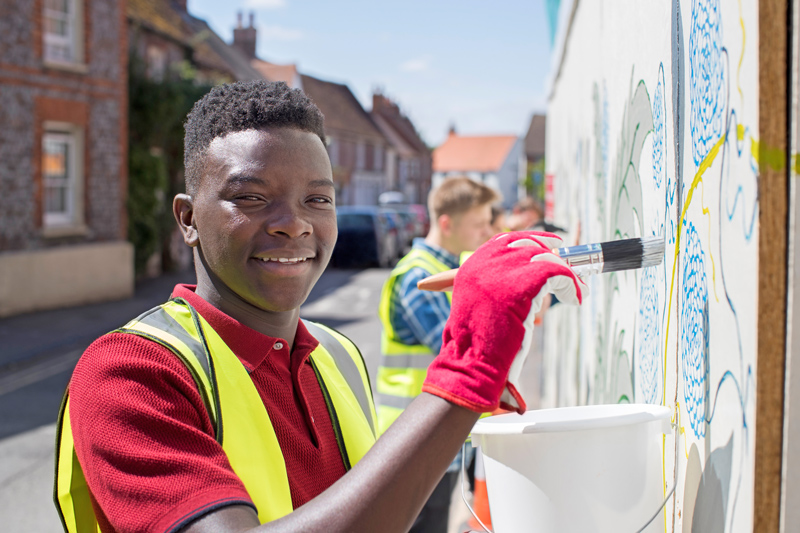A small seed of concern may take root in the mind of a teenager, planted by social pressures, school demands, or deeper struggles. At first, it may seem manageable. But without support and guidance, that seed can grow unchecked branching into anxiety, deepening into depression, or reaching toward unhealthy coping mechanisms such as substance use.

We have been operating for far too long with a mind to appear when the vines are already in occupation. And what would it be to have met them in the garden a good deal sooner? It is not three-year-old mental health crisis care that is the future of youth mental health, but young people with a better basis. It is yet another step toward becoming proactively resilient, and the strategies are more effective than ever, and more hopeful than ever.
Family as the First Line of Defense
People are great, but the home is the initial and most significant support system a child will ever encounter. Teenagers exist within a complicated environment, and they flourish when they have a support system, a place where they feel loved, where they feel listened to, where they know they have a place. According to a Harvard University study, regular guidance and encouragement by parents and caregivers will lead to developing a healthier brain structure in poised adolescents. This reinforcement enhances the strength of the prefrontal cortex, the part of the brain that cares about emotional control and choice-making behavior, and this forms a natural protective guard against anxiety and sickness. This haven is a strong protection against anxiety, depression and the temptation of substance use.
However, under today’s family system, many parents work long hours to provide for their children, a responsibility every caring parent takes on. But in the process, they get carried away and overlook the emotional needs of the children. When parents spend their time fulfilling the material needs of their children, they may unintentionally miss out on a lot of things their little ones need–their love, time, attention, and sense of belongingness. Absence of these can leave a void in children which if left unnoticed can lead them to seek validation elsewhere, often in unhealthy ways. This emotional gap can make them more vulnerable to anxiety, depression, and even substance use, as they look for love and attention outside the home. So, it’s important for parents to spend quality time with their children each day, talking to them about school, listening to their thoughts, and indulging in activities they enjoy. These simple acts of connection and presence can make them feel loved and valued, preventing feelings of neglect.
Divorce as a Threat
Divorce is another risk factor that can be extremely disturbing for children. While life is not challenging for every child of a single parent, many go through feelings of anxiety, guilt, insecurity and abandonment. Moreover, divorce can bring environmental changes as well, such as, new living space, financial stress, disrupted routine. And if the parental conflict continues, a child may internalize the stress, leading to emotional or behavioral difficulties. In some cases, they may turn to coping mechanisms including substance use. Protective factors, however, matter. A strong bond with one of the parents, peer support, and healthy coping mechanisms used as early intervention tools can bring about a positive change and lower the chances of long-term harm. Even if the conflict arises between the parents after separation, it remains their responsibility to ensure their child’s emotional needs are never overlooked. No matter how bad the relationship may be, children’s need for love, stability and support must always come first.
School as a Savior
Our best early detection tool is the school environment in which children spend most of the day. The most important and initial step will be training the front-line observers- teachers, coaches and staff to be attentive in spotting the red flags. That is, monitoring any significant behavior changes.
Effective, simple, non-identifying screening questions provided in a non-judgmental environment have the potential to indicate children in need of assistance that can be provided even before a crisis. At the same time, programs like Social-emotional learning (SEL) programs and Cognitive Behavioral Therapy (CBT) teach all students to understand and manage emotions, reduce stigma, and make it easier to identify those needing extra support.
These efforts can go a long way and prove to be effective in a caring atmosphere with strong teacher-student relationships and measures that prevent bullying, reduce stress, and promote security. Equally important is access. Having a counsellor or mental health worker in school also means that help is readily available and there is no stigma. Frameworks, such as the one known as Attachment, Self-Regulation, and Competency (ARC), further show how adult relationships can help students with regulating emotions and coping with challenges inside and outside the classroom.
Positive Peer and Community Connections
A feeling of belonging acts as a strong defense mechanism for the mental health of a young person. Healthy avenues such as sports teams, arts groups, voluntary work or mentorship programs are positive sources of connection and a place where a teen can be among like-minded people without fear of judgment. These relationships ease the sense of isolation and build resiliency because they enhance the sense of self-worth and community support. Research strongly proves the effectiveness of the approach given. According to a study published in the American Psychological Association (APA), adolescents who have a strong relationship with society and fellow students are less likely to experience depression and anxiety. In addition, systematic programs on mentoring (which have been found to raise self-esteem and academic activity) are helpful.
Building Skills for Life
Prevention is a combination of empowering young people by teaching them to be self-reliant and developing lifelong skills. Learning stress-management techniques such as mindfulness, deep breathing, and journaling gives them the power to overcome emotional situations. Combined with advancing a healthy lifestyle, including daily physical activity, a balanced diet, and sleep, these methods construct resilience at the foundational level. Role-playing refusal techniques equips adolescents with skills to say no to substances such as alcohol, drugs, or vaping when their friends do so, without any fear of doing so.
Making Help Easy to Access
Early intervention is the key to addressing an aspect or a manageable struggle before it becomes a crisis. With ready access to counseling or therapy, young people can learn to cope healthily before unhealthier patterns become a part of their lives. The access to telehealth has changed this in that it has reversed major obstacles existing in access to professionals in rural areas and individuals with tight schedules who previously did not have access to professionals, by connecting them to professionals in any location. This is best achieved when systems work cooperatively, when the care settings are coordinated, and solidarity is used to streamline a young person’s needs, so that the journey to support is met without stigma and with ease.
Conclusion
Efforts to prevent risks among young people should focus on instilling safeguards early in their development, rather than waiting for a crisis to occur. Resilience and minimal risks will be achieved because of the accessibility of counseling, excellent community policy, and early education activities. Prevention is not just an initiative, but the promise to young people that no matter what, their health and welfare will always be their paramount concern.
Temitope Fabayo, BA, MBA, is President of DMC HomeCare.
References
Ackerman, C. (2017). 25 CBT techniques and worksheets for cognitive behavioral therapy. [online] Positive Psychology. Available at: https://positivepsychology.com/cbt-cognitive-behavioral-therapy-techniques-worksheets/.
ARC Framework (2016). What is ARC? – ARC Framework. [online] Arcframework.org. Available at: https://arcframework.org/what-is-arc/.
Harvard University (2024). Brain Architecture – Center on the Developing Child at Harvard University. [online] Center on the Developing Child at Harvard University. Available at: https://developingchild.harvard.edu/key-concept/brain-architecture/.
Hodgkinson, S., Godoy, L., Beers, L.S. and Lewin, A. (2017). Improving mental health access for low-income children and families in the primary care setting. Pediatrics, [online] 139(1), pp.1–9. doi: https://doi.org/10.1542/peds.2015-1175.
Lawson, G.M., McKenzie, M.E., Becker, K.D., Selby, L. and Hoover, S.A. (2019). The Core Components of Evidence-Based Social Emotional Learning Programs. Prevention Science, 20(4), pp.457–467. doi: https://doi.org/10.1007/s11121-018-0953-y.
Shaver, J. (2022). The State of Telehealth Before and After the COVID-19 Pandemic. Primary Care: Clinics in Office Practice, [online] 49(4), pp.517–530. Available at: https://pmc.ncbi.nlm.nih.gov/articles/PMC9035352/.
Robinson, L. and Smith, M. (2025). Stress management: Techniques & strategies to deal with stress. [online] HelpGuide.org. Available at: https://www.helpguide.org/mental-health/stress/stress-management.
Weir, K. (2025). U.S. Teens Need Far More Emotional and Social Support. [online] Apa.org. Available at: https://www.apa.org/monitor/2025/04-05/teen-social-emotional-support.
Yu, W., Yao, W., Chen, M., Zhu, H. and Yan, J. (2023). School climate and academic burnout in medical students: a moderated mediation model of collective self-esteem and psychological capital. BMC Psychology, 11(1). Doi: https://doi.org/10.1186/s40359-023-01121-6.




